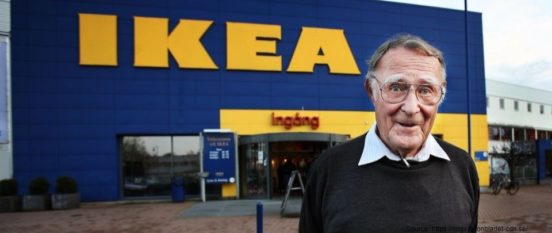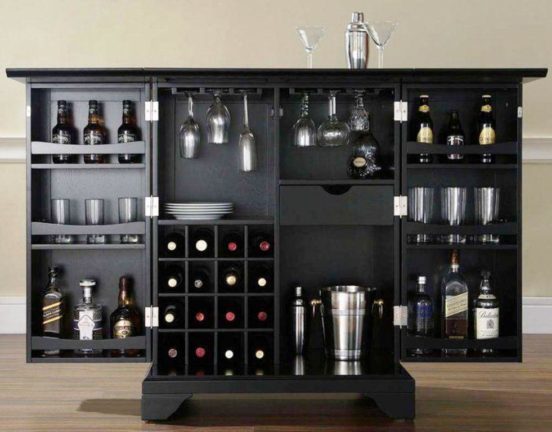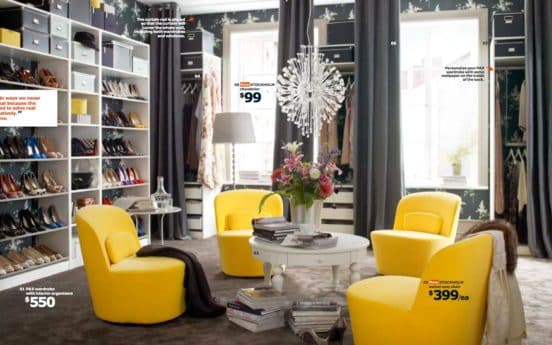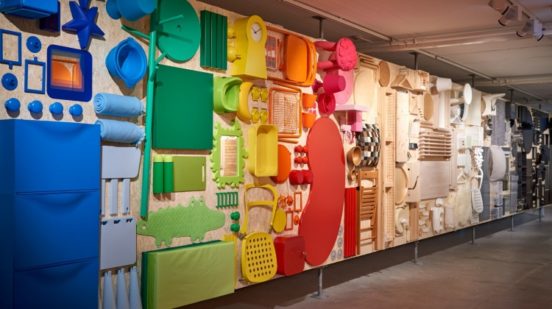The founder of Ikea, Ingvar Kamprad, died at age 91. The furniture pioneer started an empire which centered around simple, modern, low-cost furniture. Ikea revolutionized the furniture industry and its designs have become iconic all over the world.
Kamprad started his business at just age 17, while living with his family on a dairy farm in Agunnaryd. The poor family relied on young Kamprad to sell matches and pencils to survive. Kamprad was dedicated to being thrifty, and remained so even after he became the world’s eighth-richest person, with a personal net worth of $58.7 billion. Kamprad was said to have lived in Switzerland to avoid the higher taxes in Sweden, flew coach, stayed in cheap hotels, and drove an old Volvo. Ikea is the world’s biggest furniture retailer. It includes over 400 stores and spans 49 countries on six continents. Its catalogue is translated into 32 languages, with a circulation of 210 people.
Reporters have since discovered that Kamprad’s thriftiness was something of a myth. He drove a Volvo, but also owned a Porsche. He owned villas in Lake Geneva and vineyards in Provence. However, Ikea itself was owned and operated through a charitable trust in the Netherlands. The trust is designed to ensure the company never goes public or is broken up.
Kamprad’s personal ethos was set out in a book called “The Testament of a Furniture Dealer,” which listed his commandments about selling furniture. He wanted his employees to live the Ikea spirit, which included being polite, well groomed, enthusiastic, humble and excited about Ikea’s mission.
Although Kamprad liked to live in complete seclusion, he ventured out on secret missions to Ikea stores, where he shopped anonymously. He would stop and interrogate employees, who had no idea who they were actually talking to.
Kamprad’s other principles were explained in the book “Leading by Design: The Ikea Story,” which he wrote with Bertil Torekull. Ikea’s genesis, according to the book, was a desire for frugality in all things. Stores were built on cheap land outside of cities. Materials were purchased in bulk in order to get the cost way down. Sales staff were deemphasized in order to allow customers to explore and shop without pushy sales staff. Furniture was meant to be assembled by customers, and was accompanied by wordless instructions, which could be used in any store around the world.
Ikea describes its legacy as deriving from the Smaland region where Kamprad grew up. The rugged landscape forced its residents to get by through creativity and make use of whatever resources were on hand. The residents of Smaland pride themselves on being no-nonsense innovators, which is how Kamprad will be remembered.
Ikea’s headquarters in Almhut include a museum which explores Kamprad’s history. It displays the things he sold by mail order, including matchsticks, stationery, and fountain pens. The first versions of Ikea’s furniture are also on display. The name IKEA is derived from Kamprad’s initials (IK), the E is named for his farm (Elmtaryd), and the A is for the village of Agunnaryd.
















